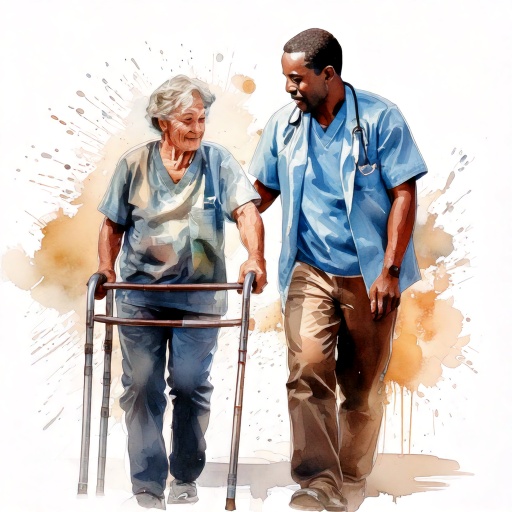April is Occupational Therapy Month, a time to celebrate the invaluable role that occupational therapists (OTs) play in helping individuals live healthier, more independent lives. Occupational therapy focuses on enabling people of all ages to participate in everyday activities—whether it’s going to work, taking care of personal tasks, or simply enjoying hobbies. It’s an essential service for those recovering from illness or injury, those with disabilities, or anyone needing support to enhance their quality of life.
What is Occupational Therapy?

Occupational therapy is a holistic approach to healthcare that helps individuals regain, develop, or maintain the skills necessary for daily activities. Occupational therapists work with patients to improve physical, cognitive, and emotional abilities, enabling them to live more independently and safely. Whether someone is recovering from surgery, adjusting to a disability, or managing a chronic condition, OTs provide tailored strategies and support to enhance their overall well-being.
How Occupational Therapy Supports Well-Being

- Recovery After Injury or Illness Occupational therapists play a crucial role in helping people recover after an accident, surgery, or illness. They work on regaining mobility, strength, and coordination, allowing individuals to return to normal life as quickly as possible. By adapting techniques and tools, OTs help patients regain confidence and independence.
- Cognitive and Mental Health Support OTs also support those with cognitive impairments due to conditions like dementia, stroke, or brain injury. They offer strategies for memory, decision-making, and problem-solving, ensuring that individuals maintain the highest level of function possible in their daily lives.
- Chronic Condition Management For people with chronic conditions such as arthritis, Parkinson’s disease, or multiple sclerosis, OTs create customized plans to help them manage their symptoms and stay active. Through exercise, adaptive techniques, and lifestyle adjustments, OTs improve the quality of life for those with long-term health conditions.
- Workplace Ergonomics OTs assist individuals in adjusting to their work environments, helping to create an ergonomically safe and productive workspace. They can provide recommendations for adaptive equipment or practices to prevent workplace injuries and improve performance.
Relevant Benefits to Support Your Health and Well-Being
As part of our commitment to supporting your overall health, we want to ensure you’re aware of the following resources that may align with Occupational Therapy Month:

- Employee Assistance Program (EAP): Offers counseling services for managing emotional stress or mental health conditions, which can sometimes be linked to physical limitations.
- Health and Wellness Programs: We encourage employees to stay active, manage their health, and seek guidance on improving overall fitness and wellness. Occupational therapy can be a key component for those with specific physical or cognitive needs.
- Physical and Occupational Therapy Coverage: Both of our health plans include coverage for physical, speech, and occupational therapy, helping you access the care needed to regain strength, mobility, and independence after an illness or injury.
- Workplace Adjustments: For colleagues desiring workplace accommodations due to health issues, we offer resources and support to ensure a comfortable and efficient work environment. Occupational therapy can help evaluate and recommend adjustments to your workspace or daily tasks.
Call to Action
This Occupational Therapy Month, take a moment to learn more about the role of occupational therapy in supporting your well-being. Whether you or someone you know is dealing with a health condition, injury, or simply looking to improve daily function, occupational therapy offers valuable solutions. We encourage you to reach out to your healthcare provider to discuss how OT can help you achieve your personal goals. If you’re unsure where to start, feel free to contact our Benefits team for guidance on therapy coverage options.
References
American Occupational Therapy Association. (2023). What is occupational therapy? Retrieved from https://www.aota.org
U.S. Department of Health & Human Services. (2022). Occupational therapy and the importance of independence. Retrieved from https://www.hhs.gov
National Institute on Aging. (2022). Occupational therapy for older adults. Retrieved from https://www.nia.nih.gov
